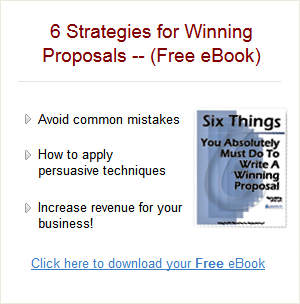What's the Most Important Think to Know About Writing Winning Proposals?
The single most important element of a winning proposal is a clear set of direct benefits the customer will receive by selecting you. Nothing is more important than that. Your proposal will win or lose on that alone.
You must remember this crucial fact: From the customer’s perspective, most firms in a given competitive procurement are technically capable of doing the job. The only way you can win is by differentiating yourself from the competition. And you do that by offering a solution that has more benefits to the customer than anyone else.
And here’s something else to keep in mind. What you perceive as a benefit may not be what the customer sees as a benefit. I cannot count the number of proposals I have read that cited features of an approach as if they would automatically be perceived by the customer as benefits.
Which brings us to a definition. What’s the difference between a feature and a benefit? A feature is an element of your solution. It’s what you will do, or what you will offer. Air conditioning in a car is a feature. But is it a benefit? Most of us would say yes. But what if we lived in Nome, Alaska? Is air conditioning still a benefit? Or is it a piece of equipment I may use once or twice a year but the rest of the time is a costly attachment that decreases my gas mileage?
A feature is not automatically a benefit. It is a benefit if and only if the customer values it. So, you can’t just fill your proposal with feature after feature and expect the customer to see the intrinsic value. You have to discover what the customer values, and present your features as a way to bring that value. Then it becomes a benefit. In order to discover what he values, you have to find out what his hot buttons are.

